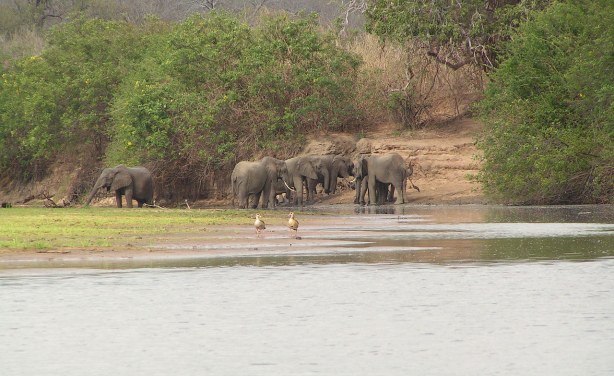Controversial Dam Contruction Threatens Tanzanian Game Reserve
Over 2.6 million trees may be cut off in Selous Game Reserve when the Stiegler's Gorge hydroelectricity project takes off in July 2018. To meet the country's energy needs, the government is planning to build a huge hydropower dam in the heart of Selous Game Reserve. The plan is expected to provide the country with an additional 2,100 megawatts of electricity.

Despite major backlash from conservationists, the Tanzanian government plans to start building a hydropower dam inside a UNESCO-protected wildlife reserve this July. More than 2.6 million trees face the chop.
The Selous Game Reserve in Tanzania is one of the last major expanses of wilderness in Africa. It's a protectedUNESCO World Heritage Site about the size of Switzerland, and home to elephants, lions, giraffes, cheetahs and rhinos, as well as 12 percent of all endangered African wild dogs.
But the nature reserve is under threat.
Since 2014, it has been on UNESCO's List of World Heritage in Danger, primarily because of elephant poaching. In less than 40 years, the park lost 90 percent of its elephants. But a planned hydropower dam could have an even more devastating impact.
Power generation vs. conservation
Tanzania has an electricity problem. According to the United Nations Development Program (UNDP), only 10 percent of households in Tanzania have access to the national grid.
To meet the country's energy needs, the Tanzanian government is planning to build a huge hydropower dam on the Rufiji River, in the heart of the protected Selous Game Reserve. The plan is expected to provide the country with an additional 2,100 megawatts of electricity.
Reaching 130 meters (427 feet) in height and stretching 700 meters across the Stiegler Canyon, the dam is to create a 1,500 square kilometers (463 square mile) lake. An area roughly twice the size of Berlin would vanish under water.
Conservation organizations, including the World Wildlife Fund (WWF) and the International Union for Conservation of Nature (IUCN), as well as the UNESCO World Heritage Committee (WHC) have raised concerns since plans for the dam were released in 2009, and have consistently called for the project to be abandoned.
The IUCN called the project "fatally flawed," while the WHC expressed its "utmost concern," saying the dam project has a "high likelihood of [causing] serious and irreversible damage."
A threat to wildlife and livelihoods
"It's a huge threat," Johannes Kirchgatter, officer for the Africa Program for WWF Germany, told DW.
"The dam would destroy one of the most important habitats for wildlife and the heart of the game reserve, where most of the animals roam, especially in the dry season. It would open up that whole area for industrialization, infrastructure and settlements."
"It's absolutely horrible to imagine that in the middle of this pristine wilderness a huge dam is being built," he added. "If you're standing in the middle of Selous now, it's a fantastic wilderness, there is wildlife all over, and all of that would be gone... It would be a great loss for us and the generations to come."
And it's not just Tanzania's wildlife and ecosystems that are at stake. Local livelihoods could suffer, too.
The Rufiji, Tanzania's largest river, crosses Selous for 600 kilometers (370 miles) and flows into the Indian Ocean.
According to a WWF report, the dam would trap most of an estimated 16.6 million tons of sediment and nutrients carried by the river every year, leading to soil erosion and cutting off lakes and farmland downstream.
The Rufiji delta, home to the largest mangrove forest in East Africa and fish, shrimp and prawn fisheries, would also be starved of water.
All in all, the construction of the dam could damage the livelihoods of over 200,000 farmers and fishermen, according to the WWF.
Tourism at stake
The proposed dam could also impact one of Tanzania's biggest sources of income: tourism.
The country's natural attractions - including the Serengeti National Park and Mount Kilimanjaro - draw over a million tourists each year and generate 17 percent of its GDP. Selous alone generates more than 5 million euros ($6 million) a year.



No comments: